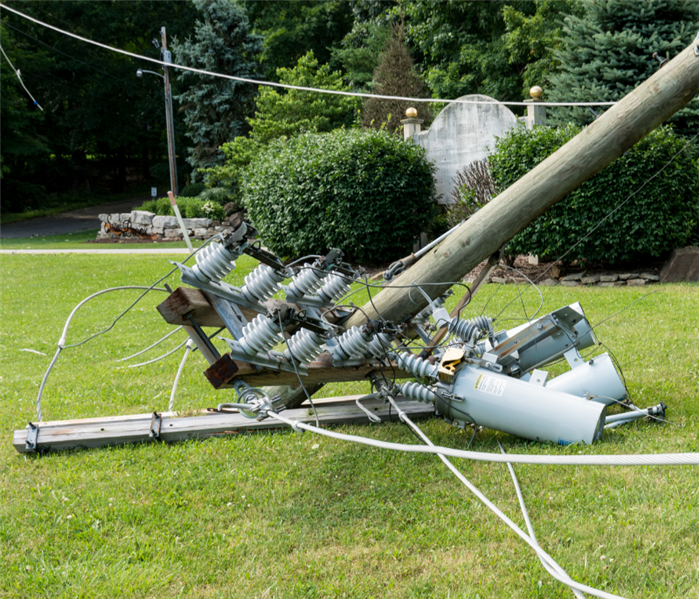Creating A Power Outage Procedure For Your Connecticut Business
12/29/2020 (Permalink)
A business power outage can cause serious disruptions to your entire operation, resulting in a loss of productivity and revenue. Depending on your type of business, the losses may be even more extensive.
With weather-related power outages doubling since 2003 - it's more likely than ever for your business to lose power. That's why you should create a business continuity plan to help mitigate losses due to loss of power.
Planning Before A Business Power Outage
- Create a plan for when the power does go out. Make sure that your employees know what to do and are informed on the following tips as well.
- Take steps to ensure your employees and customers safety. Make sure that elevators are not used and that nobody is stuck in a part of the building due to the loss of power. Check for down power lines around the building before anyone exits as well to avoid accidental electrocution.
- Prepare an emergency kit. This is something you should have for any disaster that may strike your business. Your emergency kit should include:
- Drinking water
- First aid kit
- Flashlights
- Batteries
- Hand sanitizer
- Basic tools
- Consider installing an emergency lighting source. These kinds of lights will turn on only when the power goes out. There are many different versions, some of which are battery powered and are charged while the power is on. These will help everyone safely navigate the building.
- Test your backup systems. If a natural disaster causes a loss of power, you will still need fire alarms, sprinkler systems, security systems, and exit signs to work in case of yet another emergency in the building. It is best to invest in backup battery powered systems so you know these will work even in the event of a power outage.
- Install, test, and know how to use your backup power or generator. Having a generator can allow you to continue working throughout the power outage. This will ensure that critical parts of your business will be able to continue to run.
- For example, if you're an emergency service like us here at SERVPRO of Old Saybrook, you want to be able to still answer the phone for customers who desperately need your services. Make sure the generator is in a well-ventilated area to avoid carbon monoxide poisoning, and have fuel stored safely on site.
- Identify what equipment may need to be turned off during a power outage. Certain electrical equipment in your business may be highly susceptible to a power surge when the power comes back on. Its a good idea to have surge protection devices in the building to make sure electronics are protected when the power goes out, especially if it is only for a brief time. This is because you may not unplug everything before power returns.
- Know where the meter room and fuse boxes are. An electrician may need access to these areas once power is restored in case a fuse blows or there is some other electrical issue in the building.
Plan For During A Business Power Outage
- Report your outage. Call your utility company to let them know you have no power. This helps the company respond more efficiently and may give you an idea of when power will be back.
- Keep fridges or freezers closed. This is most applicable for restaurants who will lose their cooled inventory during power loss, but you don't want the employee fridge to go bad either. Keeping these closed will hopefully keep everything fresh and cool until power is restored.
- Unplug the equipment you designated in the planning phase. This helps to prevent the risk of a fire and will protect expensive electrical equipment.
- Check to make sure everyone is safe. If it is safe to leave the building, make sure that people evacuate in an orderly manner.






 24/7 Emergency Service
24/7 Emergency Service
